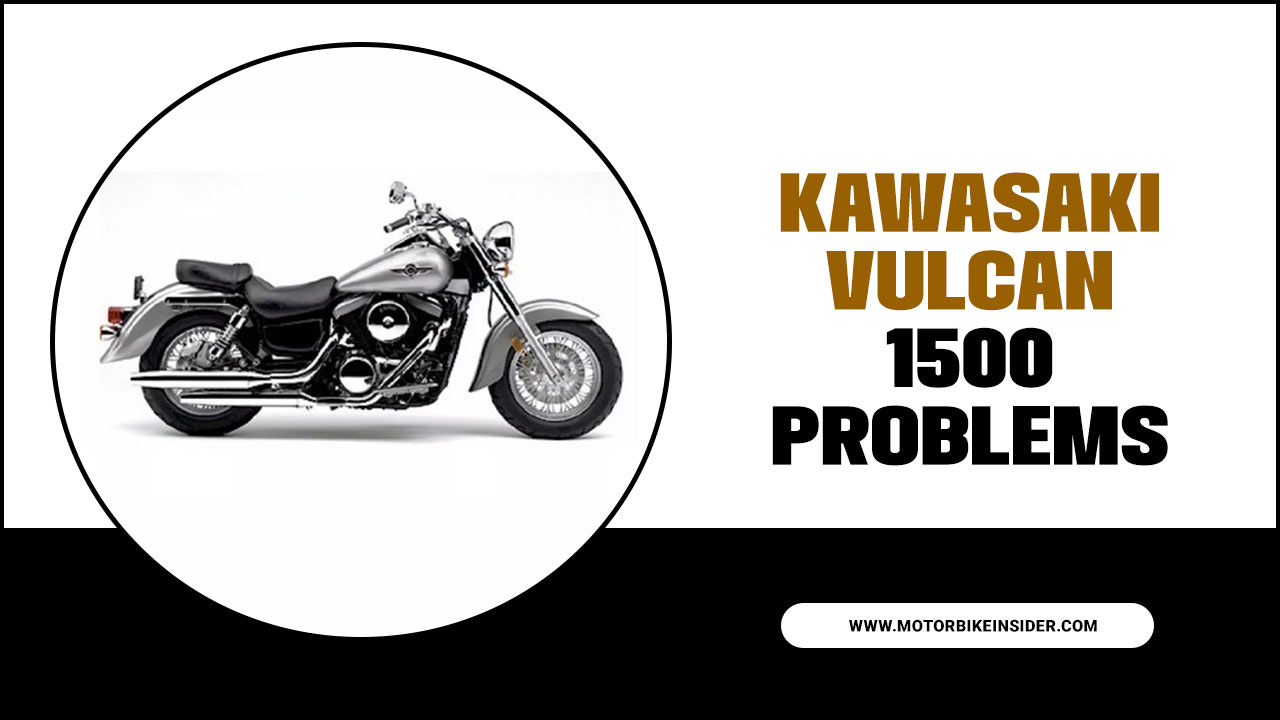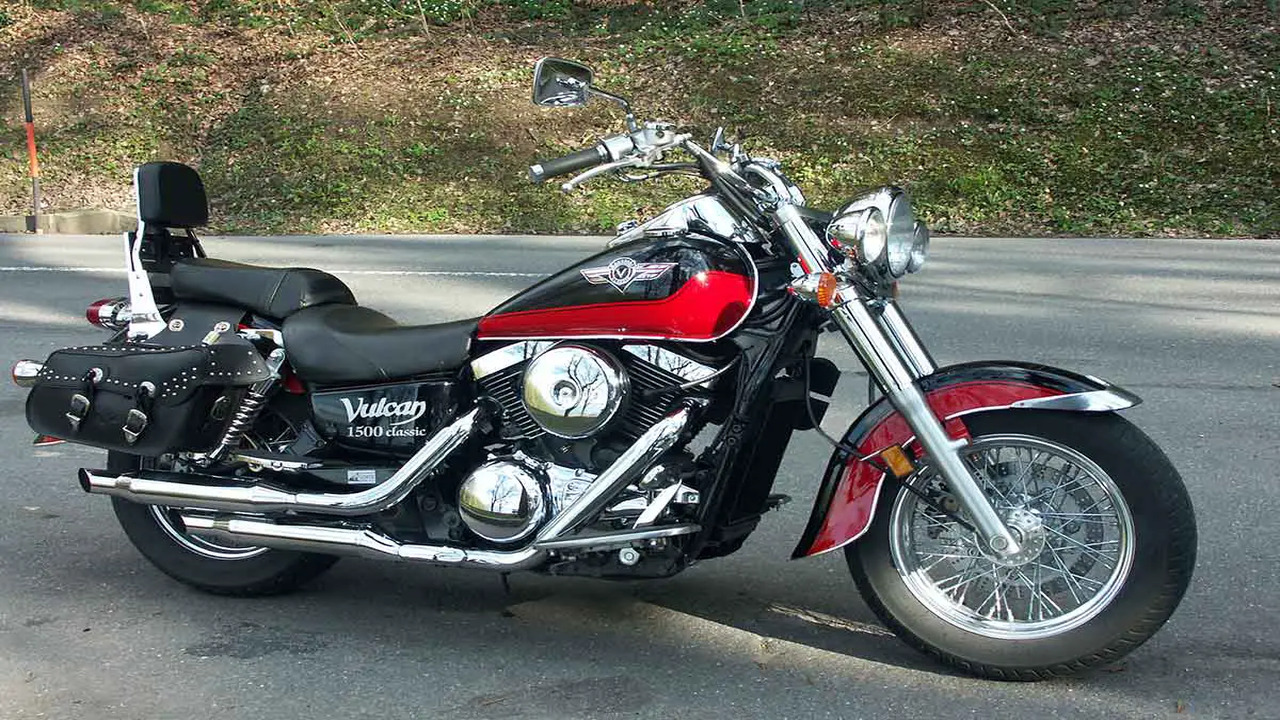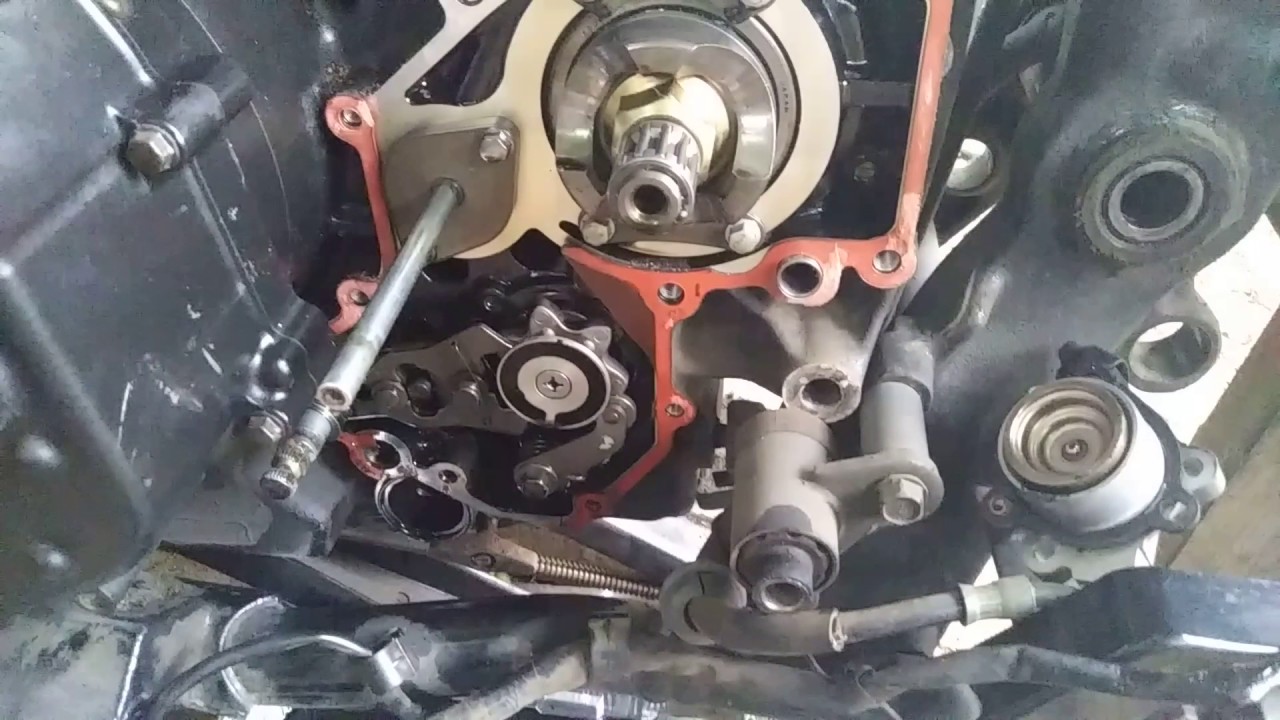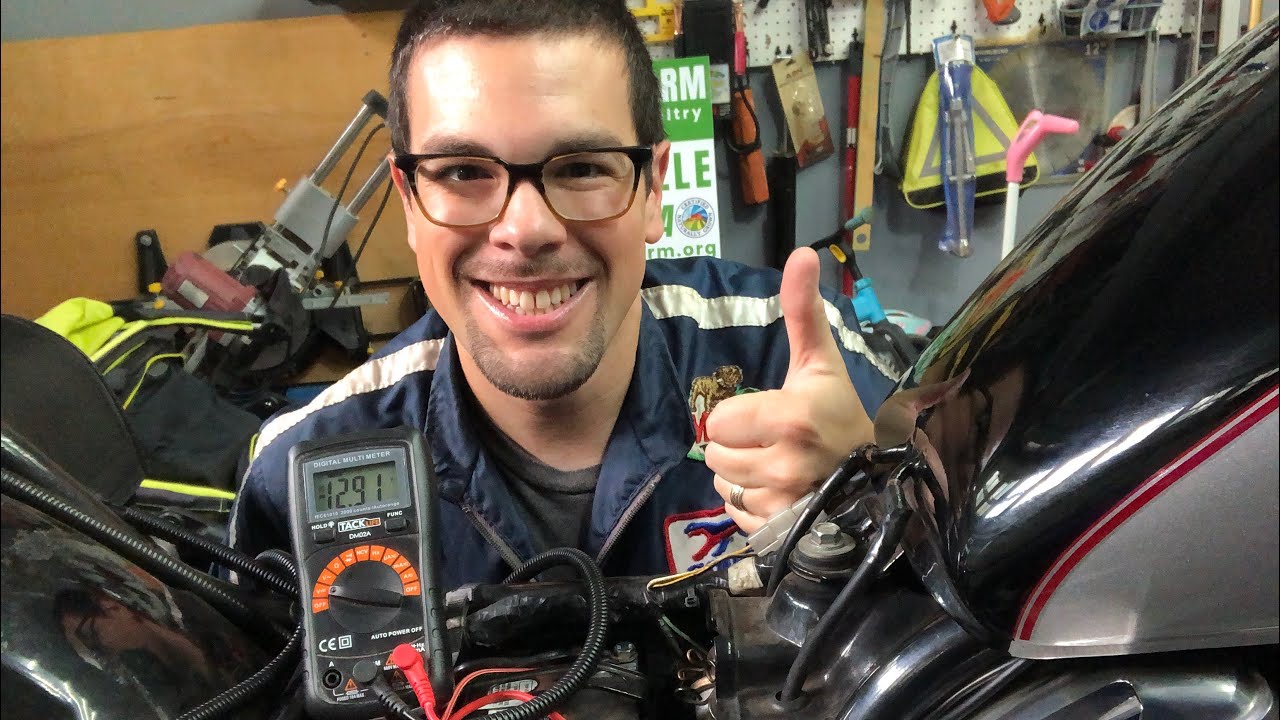The Vulcan 1500 is a large displacement motorcycle from Kawasaki. It was introduced 1987 as the first Vulcan model (Vulcan 88). Later, it got a new name, the Vulcan 1500, in 1996.
Thus, the liquid-cooled bike has a 1,470-cc (88 ci) V-Twin engine with 5.3gal fuel capacity. For this engine capacity, the earlier name of the Vulcan 1500 was Vulcan 88. Thus, it has a five-speed manual transmission and a final belt drive.
Unfortunately, there is still a chance of Kawasaki Vulcan 1500 problems while being so good at its specs and competitive poor performance. We will explain some notable faults of this bike with possible solutions. Please stay on this page to find out how to solve any problem quickly with this motorbike.

List Of Kawasaki Vulcan 1500 Problems

The Kawasaki Vulcan 1500 Problems is an outstanding motorcycle. It is meant to deliver reliable performance with a basic design. Yet, it has encountered a few problems over the years. Riders have faced a few major and minor issues while riding this motorcycle.
The most common problems of the Kawasaki Vulcan 1500 include noisy drive belts, quickly wearing out regulators, becoming loud at high speeds and irregularities in the transmission system. Some complained about its basic design too.
|
Failure of the oil gear pump |
The pump fails between 4000-15000 miles on the bike |
Replacement of plastic oil gear pump |
|
Noisy drive belt |
Drive belt may often create noise if not adjusted correctly |
The precision of belt tension |
|
Transmission irregularities |
The bike slips out of gear in the 2 |
Full engine teardown |
|
Gear 1-2 clunky shift |
Clunky sound while shifting the gear |
Shift to 2 |
|
Worn out regulator |
The regulator or rectifier wears faster |
Replacement of regulator |
|
Loud at extreme speeds |
The bike creates noise at above 120km speed |
Replace the exhaust system or use a noise-cancelling kit |
|
Very basic design |
No windshield, saddlebags, or sissy bar |
– |
Problem 1: Failure Of The Oil Gear Pump

Vulcans produced from 1987 to 2005 came to the market with plastic oil pump gear. The latter models had metal oil gear pumps as a replacement. Thus, models like Vulcans Classic, Nomad, and Tourer tended to oil gear failure. Typically, the problem becomes evident when the rider has ridden the bike for 4000-15000 miles.
If you are up to a used or old Vulcan 1500, first inquire about the oil gear pump condition and history for any repair. If the pump is not fixed or replaced with metal, there might be a risk of failure. However, you can identify the issue by knowing the symptoms. Some are whining noises from the clutch cable area, check engine misfires; lights turned on, and oil pressure irregularity.
Possible Solution
If you buy the latter models (from 2005), there won’t be any problem. Otherwise, you may need to replace the troubling unit with a newer one. It is not costly to repair since the gear pump for the oil in Vulcan 1500 is inexpensive. The Vulcan 1500 oil gear pump is around $25 to $35. However, instead of replacing it alone, you should visit a mechanic. It is crucial for the perfect oil gear pump replacement.
Problem 2: Noisy Drive Belt

The Kawasaki Vulcan 1500 is a popular motorcycle known for its power and performance. However, like any other vehicle, it can experience certain problems over time. One common issue that riders may encounter is a noisy drive belt.
The drive belt is responsible for transferring power from the engine to the rear wheel, and when it becomes worn or damaged, it can produce excessive noise. This can be caused by factors such as improper tension, misalignment, or wear and tear. It is important to address this issue promptly, as a noisy drive belt affects the overall riding experience and can indicate potential damage or failure.
Possible Solution
One common problem Kawasaki Vulcan 1500 owners face is a noisy drive belt. When the drive belt becomes noisy, it can be quite frustrating and may affect the motorcycle’s overall performance. However, there are possible solutions to this issue. Firstly, it is important to check the tension of the drive belt. If the belt is too loose or too tight, it can cause noise and potential damage.
Adjusting the tension to the manufacturer’s recommended specifications can help alleviate the noise. Another solution is to inspect the drive belt for any signs of wear or damage, such as cracks or fraying. If any issues are found, replacing the drive belt with a new one can address the noise problem.
Problem 3: Transmission Irregularities

Another notable fault in Vulcan 1500 is the transmission-related problem. Typically, it happens when the rider comes on the hard bike as the alongside bike slips out of gear. Transmission difficulties start, especially when the bike remains in second gear. As a result, the rider must re-select the second gear or move to another one. A symptom can be the sound that appears while you shift your bike into second gear. As you shift the gear, the clunky noise hits the ear hard.
Possible Solution
A full teardown of the engine is the most effective solution. You must replace the shift fork and second gear during the process. Besides, you may consider replacing the clutch spring and rings. Overall, the cost of replacements can be $3000 or more. Some riders suggested they somehow managed to ride up to 40K miles with the transmission issue.
Problem 4: Gear 1-2 Clunky Shift

A Kawasaki Vulcan 1500 may experience problems with the gear shift, particularly in shifting between gears 1 and 2. This issue is often described as clunky or difficult shifting. It is important to note that the specific problems can vary and may be caused by various factors, such as worn clutch plates, improper clutch adjustment, or transmission issues.
Suppose you are experiencing problems with the gear shift on your Kawasaki Vulcan 1500. In that case, it is recommended that you consult a professional mechanic or Kawasaki dealership for a proper diagnosis and repair.
Possible Solution
Many riders and mechanics have already solved the problem by replacing the old shift fork with a new one. Thus, some riders have already started accepting the noise as a regular event.
Another solution to the problem can be shifting to second gear when you keep the bike speed at 20-26 mph. It can vary as riders suggest the range to be lower. If you shift the gear at 30mph or higher speed, your bike may reach second gear or neutral. Hence, you must be careful about speeding up the Kawasaki Vulcan 1500 as you change gears. You shouldn’t hear the clunky noise if you can slow the bike while shifting to second gear.
Problem 5: Worn Out Regulator
A regulator or rectifier of a bike is indeed a critical component. It regulates and rectifies the voltage to the bike’s battery. Hence, the regulator’s role is to convert AC into DC. Also, it can sort out the DC if it is less than 14.5 volts before rectifying it to the battery.
Unfortunately, the regulator of the Kawasaki Vulcan 1500 has a worn-out regulator problem. Some reports were about the burning out of regulators in some Vulcan models. Consequently, a faulty regulator may overcharge the weak battery, reducing lifespan. If you see your battery reading 17 volts or more, consider the regular having the problem.
Possible Solution
There are possible solutions to this problem. One solution is to replace the worn-out regulator with a new one. This can be done by sourcing the necessary parts from a reputable dealer or motorcycle shop and following the manufacturer’s instructions for installation. Another option is to have the regulator repaired by a professional specialising in motorcycle electrical systems.
Problem 6: Loud At Extreme Speeds
One common problem that Kawasaki Vulcan 1500 owners may encounter is excessive noise at extreme speeds. This issue can be quite bothersome and may affect the overall riding experience. The loud noise can be described as a high-pitched whining or whistling sound, which becomes more pronounced as the bike reaches higher speeds.
Possible Solution
The Kawasaki Vulcan 1500 motorcycle may encounter certain problems that riders should know. One common issue owners report is loud noises when riding at extreme speeds. This can be unsettling and indicate an underlying problem with the bike’s engine or exhaust system.
To address this, it is recommended to have the motorcycle inspected by a qualified mechanic who can diagnose and fix the issue. It is important to address this problem promptly to avoid further damage and ensure a safe riding experience. Seeking professional help is the best solution to resolve any loud noises experienced while riding the Kawasaki Vulcan 1500 at extreme speeds.
Problem 7: Noisy Drive Pulley
The Noisy Drive Pulley is one of the common problems Kawasaki Vulcan 1500 owners face. This component, responsible for transferring power from the engine to the rear wheel, can develop excessive noise over time. The noise may range from a rattling or grinding sound to a high-pitched whining noise. It can be quite bothersome and affect the overall riding experience.
If left unaddressed, a noisy drive pulley can lead to further damage and potential failure of the pulley system. It is recommended to have a professional mechanic inspect and address this issue to ensure the smooth and quiet operation of the Kawasaki Vulcan 1500. Regular maintenance and prompt repairs are crucial to keep the bike in optimal condition and prevent additional complications.
Possible Solution
One possible solution is to check the drive pulley for any signs of damage or wear. If there are any visible issues, such as cracked or worn-out teeth, it may be necessary to replace the drive pulley altogether. Additionally, inspecting the pulley bearings for signs of wear or lack of lubrication is essential. In some cases, greasing or replacing the bearings can resolve the noise issue.
Problem 8: Brake Problems

Brake problems can be a concerning issue for Kawasaki Vulcan 1500 owners. One common problem riders report is a soft or spongy brake feel, where the brakes do not respond as expected or fail to provide sufficient stopping power. This can be attributed to various factors such as air in the brake lines, worn brake pads, or malfunctioning brake components.
Another issue that has been reported is brake noise, which can range from squeaking or squealing to grinding or scraping sounds. This could indicate worn brake pads or a need for brake rotor replacement. It is important for Kawasaki Vulcan 1500 owners to regularly inspect their brakes, maintain proper fluid levels, and promptly address any signs of brake problems to ensure optimal safety and performance on the road. Professional assistance from a qualified mechanic is recommended for diagnosing and resolving brake issues effectively.
Possible Solution
Brake problems are a common issue that some Kawasaki Vulcan 1500 owners may encounter. These problems can range from soft or spongy brakes to a loss of braking power. However, several possible solutions address these issues and ensure optimal brake performance.
One possible solution is to check the brake fluid level and quality. Low or contaminated brake fluid can affect the brake system’s efficiency. If the fluid is low, it should be topped up with the recommended brake fluid for the Vulcan 1500. If the fluid is dirty or discoloured, it may be necessary to flush and replace it.
Problem 9: Fuel System Issues
Fuel system issues can also be a concern for Kawasaki Vulcan 1500 owners. One common problem reported is difficulty starting the motorcycle or a failure to start altogether. This can be attributed to various factors such as clogged fuel lines, a dirty fuel filter, or a malfunctioning fuel pump.
Another issue that may arise is poor fuel efficiency, where the motorcycle consumes more fuel than usual. This could be due to a problem with the fuel injectors or a fuel leak. It is important for Kawasaki Vulcan 1500 owners to regularly inspect and maintain their fuel system to ensure optimal performance and prevent any potential issues.
Possible Solution
One possible solution for fuel system issues is to start by checking the fuel lines for any clogs or obstructions. If any are found, they should be cleared or replaced. Next, inspect the fuel filter and replace it if necessary. If the fuel pump is suspected to be malfunctioning, it may need to be repaired or replaced.
For poor fuel efficiency, cleaning or replacing the fuel injectors can help improve mileage. Additionally, checking for any fuel leaks and addressing them promptly is crucial. It is recommended to consult a professional mechanic for diagnosing and resolving fuel system issues effectively.
Problem 10: Electrical Problems

Electrical problems can be a common issue with the Kawasaki Vulcan 1500 motorcycle. These problems can arise due to various factors, such as faulty wiring, damaged components, or battery or charging system issues. Some riders have reported experiencing issues with the bike’s electrical system, including problems with the lights, ignition, or starting mechanism.
It is important to address these problems promptly, as they can affect the overall performance and reliability of the motorcycle. Seeking professional assistance from a qualified mechanic or electrician is recommended to diagnose and resolve any electrical problems with the Kawasaki Vulcan 1500. Regular maintenance and inspections can also help prevent such issues from occurring in the first place.
Possible Solution
Electrical problems can be quite common in Kawasaki Vulcan 1500 motorcycles. These issues range from malfunctioning ignition systems to faulty wiring or a dead battery. However, there are several possible solutions to these electrical problems. Firstly, it is essential to check the battery’s condition and ensure it is adequately charged. If the battery is old or damaged, replacing it might be necessary.
Additionally, inspecting the wiring harness and connectors for any loose connections or frayed wires is crucial. Tightening or replacing these components can resolve many electrical issues. Sometimes, problems with the ignition system may require professional assistance to diagnose and repair.
Problem 11: Suspension Problems
Suspension problems are a common concern that Kawasaki Vulcan 1500 owners may encounter. The suspension system of this motorcycle is responsible for providing a smooth and comfortable ride and ensuring proper handling and stability. However, over time, various issues may arise. One common problem is a sagging or bottoming-out suspension, leading to a harsh and bumpy ride.
Another issue that riders may experience is leaks in the suspension seals, causing a loss of fluid and diminished performance. Additionally, worn-out suspension components such as bushings or shock absorbers can reduce riding control and stability. It is important for Kawasaki Vulcan 1500 owners to regularly inspect and maintain their suspension system to prevent potential problems and ensure a safe and enjoyable riding experience.
Possible Solution
Kawasaki Vulcan 1500 owners can commonly face suspension problems. These problems can manifest in various ways, such as sagging suspension, excessive bouncing, or a rough and uncomfortable ride. However, there are possible solutions to address these issues.
One possible solution is to check and adjust the preload settings on the front and rear suspension. Proper preload adjustment can help improve the motorcycle’s overall ride quality and stability. It is important to refer to the owner’s manual or consult a professional mechanic for guidance on the correct preload settings for your specific model.
Problem 12: Cooling System Issues
Cooling system issues can be a common problem for Kawasaki Vulcan 1500 motorcycles. These issues can arise from coolant leaks, radiator blockages, or malfunctioning water pumps. If the cooling system is compromised, it can lead to engine overheating, which needs to be addressed promptly to avoid significant damage.
Coolant leaks are one of the main culprits of cooling system problems in the Kawasaki Vulcan 1500. These leaks can occur from deteriorated hoses, loose connections, or a damaged radiator. It is important to regularly inspect the cooling system for any signs of leaks and address them immediately to prevent further damage.
Possible Solution
Cooling system issues are a common problem faced by Kawasaki Vulcan 1500 owners. These issues can range from overheating to coolant leaks, leading to engine damage if left unaddressed. However, there are several possible solutions to these problems.
One possible solution is to check and replace the coolant. Coolant can become contaminated over time or lose effectiveness, leading to issues with the cooling system. Owners can ensure proper cooling system functioning by regularly inspecting the coolant and replacing it as needed.
Problem 13: Front Fork Seal Leaks
Front fork seal leaks are a common issue Kawasaki Vulcan 1500 owners face. The front fork seals are responsible for keeping the oil inside the forks and preventing leakage. However, these seals can wear out or become damaged over time, leading to oil leaks.
This can result in various problems, such as reduced suspension performance, oil dripping onto the front tire, and potential safety hazards. It is important to promptly address front fork seal leaks to avoid further damage and ensure optimal riding conditions. Regular inspection and maintenance of the front fork seals address any potential leaks and maintain the overall performance of the Kawasaki Vulcan 1500.
Possible Solution
Kawasaki Vulcan 1500 motorcycle owners commonly face the problem of front fork seal leaks. These leaks can occur due to various reasons, including wear and tear, improper installation, or lack of maintenance. When the front fork seal starts to leak, it can result in oil seeping out, leading to reduced suspension performance and potential safety issues.
There are several possible solutions to address this issue. The first step is to inspect the front fork seals to determine the extent of the damage. If the seals are only slightly worn or damaged, you may be able to repair them by cleaning and lubricating them. However, we recommend replacing the front fork seals if the damage is more severe.
Problem 14: Valve Lash Adjustment
Valve lash adjustment is an essential maintenance task for smooth engine operation in a Kawasaki Vulcan 1500 motorcycle. The valve lash refers to the clearance between the valve stem and the rocker arm. Over time, this clearance can become too tight or loose, leading to various engine performance problems.
One common problem associated with valve lash issues in the Kawasaki Vulcan 1500 is a noisy engine. When you do not properly adjust the valve lash, it can result in a ticking or clattering sound from the engine. This noise is caused by the valves not closing completely or not seating properly, leading to poor fuel economy combustion and reduced power output.
Possible Solution
Kawasaki Vulcan 1500 owners commonly face the issue of valve lash adjustment. The valve lash refers to the gap between the valve stem and the rocker arm. When this gap becomes too tight or loose, it can lead to problems such as poor engine performance, excessive engine noise, and even engine damage if left unattended. Fortunately, there are possible solutions to address this issue.
One possible solution is to perform a valve lash adjustment. This involves adjusting the clearance between the valve stem and the rocker arm to the manufacturer’s specifications. This adjustment ensures proper valve operation and can significantly improve engine performance and reduce noise levels.
Problem 15: Charging System Problems

Kawasaki Vulcan 1500 motorcycle owners can commonly experience charging system problems. These problems mainly revolve around the motorcycle’s charging system, which keeps the battery failure charged and ensures all electrical components function properly. Some common symptoms of charging system problems include a dead battery, dimming or flickering lights, and difficulty starting the motorcycle.
One of the most frequent causes of charging system problems is a faulty stator or regulator/rectifier. The stator generates electricity while the regulator/rectifier regulates and converts the electrical current to charge the battery. If either of these components malfunctions, it can result in an inadequate charging system.
Possible Solution
Charging system problems in the Kawasaki Vulcan 1500 can frustrate motorcycle owners. These problems can manifest in various ways, such as a dead battery, dim headlights, or difficulty starting the bike. However, there are several possible solutions to address these issues. One possible solution is to check the battery charge connections and ensure they are tight and corrosion-free.
Loose or corroded connections can impede the flow of electricity, leading to charging problems. Cleaning the terminals and securing the connections can often resolve the issue. Another solution is to inspect the voltage regulator. A faulty voltage regulator can lead to overcharging or undercharging the battery, causing charging system problems.
Conclusion
While the Kawasaki Vulcan 1500 Problems reported by owners, it is important to note that every motorcycle is subject to issues and ultimately depends on individual experiences. While the Kawasaki Vulcan 1500 may have its fair share of issues, it remains a popular choice among riders due to its powerful engine and smooth ride.
The best course of action is to maintain and service the bike properly and address any potential problems as soon as they arise. With its powerful engine and unique design, the Kawasaki Vulcan 1500 remains a popular choice among riders, and with proper care, it can provide a reliable and enjoyable riding experience.
FAQ’s
Is A Kawasaki Vulcan 1500 Reliable?
Yes, the Kawasaki Vulcan 1500 is generally considered a reliable motorcycle. It has a strong and durable engine, solid construction, and a reputation for longevity.
What Is The Problem With The 2007 Kawasaki Vulcan?
The 2007 Kawasaki Vulcan had a few reported problems, including issues with the fuel injection system, electrical malfunctions, and occasional oil leaks. All owners did not experience these problems, but they were known issues within the model year.
What Is The Problem With The Kawasaki 1700 Nomad?
The problem with the Kawasaki 1700 Nomad can vary depending on the specific model and year. However, some common issues owners report include electrical problems, fuel injection issues, and engine vibration at certain speeds.
Is The Kawasaki Vulcan 1500 Fuel Injected?
No, Kawasaki does not fuel inject the Vulcan 1500. Carburettors have been a staple in the motorcycle industry for decades and function by mixing air and fuel leaks in a precise ratio before delivering it to the engine.
What Is The Fuel Consumption Of A Kawasaki Vulcan 1500?
The fuel consumption of a Kawasaki Vulcan 1500 can vary depending on several factors, such as riding conditions, maintenance, and the rider’s habits. On average, the Vulcan 1500 has a Fuel tank rusting efficiency of around 40-45 miles per gallon.
